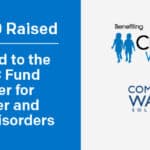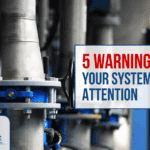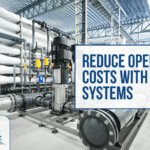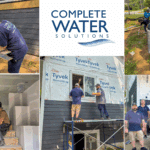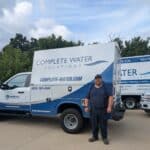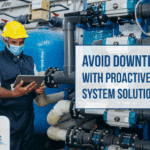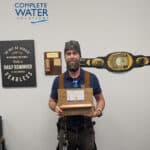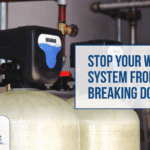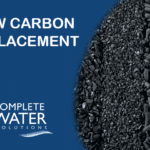Cleaning Hard Water Scale From Reverse Osmosis Membranes
Cleaning Hard Water Scale
Complete Water Solutions was called upon to help with Cleaning Hard Water Scale From Reverse Osmosis Membranes. The powder coating industry and the metals finishing industry have found Reverse Osmosis to be beneficial to provide clean water to clean and rinse parts. Using Reverse Osmosis metal finishing industries have reduced water consumption and overall wastewater from high conductivity discharge. Some additional benefits include:
- Spot Free or Low TDS (Total Dissolved Solids) water for the final rinse. Some times in high-quality applications Reverse Osmosis may be followed up with De-ionized (DI) Water providing ultra-high purity.
- Reduction in scale and sludge formation on/in heat exchangers. Calcium and magnesium will precipitate out on heating surfaces over 105 Degrees F.
- Low TDS (Total Dissolved Solids) allows for reduction in chemical usage and dumping due to high conductivity. This reduces waste, water, heating energy and chemicals which provides an overall savings.
Reverse Osmosis systems in Metal Finishing is an important piece of equipment, so when our customers call and say they are down, we respond. Complete Water Solutions was called out due to low flow and high conductivity. The customer was running out of RO water needed for the Parts Washing Booth and thus forcing to slow production down or shut down all together.
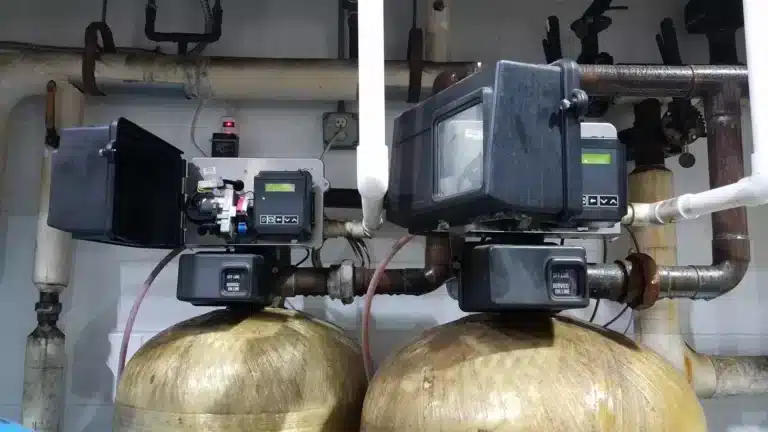
Complete Water Solutions came out the same day and began to investigate. We started at softeners. The softener system is composed of a two-tank unit. Fleck 2900 has 7 cubic feet of resin in each tank.
We first start by noting which unit(s) are on line and how many gallons are remaining. Unit #1 was on line with 5,687 gallons remaining and unit #2 in regen. The next step is to test the water both from the inlet and outlet of the softener. Inlet hardness was 26 Grains Per Gallon (444.6 PPM) and the outlet was 16 Grains Per Gallon (273.6 PPM)
Cleaning Hard Water Scale From Reverse Osmosis Membranes from CWS
The next step we do is to review the programming logging the current settings. Performing this on every service call provides a history of the last program. This is good for a few reasons, one it provides a written back up should the program be lost. If the controller needs to be replaced the program can be re-installed quickly without having to search far. Lastly, some times programs get changed, mostly by accident.
Current Program Settings
system 7 program
backwash 10
30 gpg hard
valve address 1
5% capacity safety
brine rinse 60
2 valves
190,000
rapid 10
meter immediate
remote off
brine fill 20
valve 2900
down flow
2.0 paddle
Next we waited for unit #2 to finish regeneration. During the refill process we noted that the brine tank only refilled 8″ of water. 8″ of water for brine is not enough. Before we begin to dig into the refill limitation we took down total flow processed by both softener vessels (this data is not available to get during regeneration)
To begin to understand the limited refill we begin to look at both the brine valve and the refill valve.
We cleaned the brine valve, brine piston, and the injector assembly
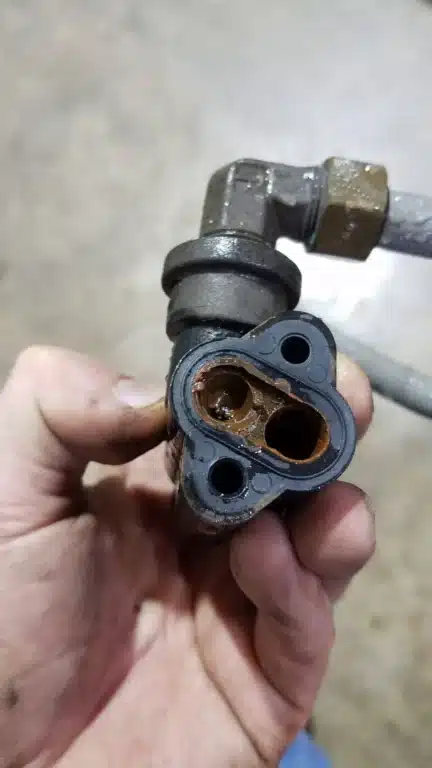
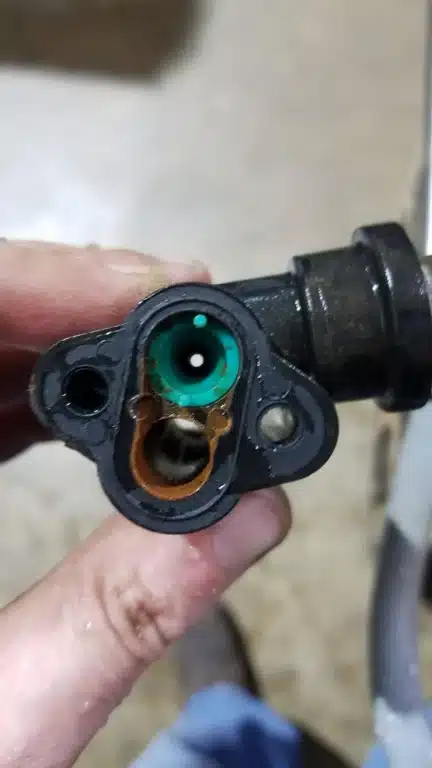
Regenerated Brine Tank
After cleaning these items we were able to successfully refill the brine tank to the correct levels. This also improved the brine draw rates allowing good brine saturation.
After the repairs we regenerated unit #1 again (after allowing some time) After the regeneration the softener tested at 0 GPG = Soft water
This hard water is what caused the RO System to have reduction in flow, increased pressure and increased conductivity. Before cleaning the Reverse Osmosis System we took down pre-data so we have a starting point. We also take data after cleaning to confirm the success of the cleaning along with having operational data should we need to look back.
ro pre cleaning
ro housing #1. 22 microsiemens
ro housing #2. 18 microsiemens
ro housing #3 180 microsiemens
This RO System did not have CIP Connections (Clean In Place) to allow for onsite cleaning. We installed those while on site. The CIP Connections allow you to recirculate the chemicals that are needed for cleaning. We have a drawing that shows you an example of the layout – Cleaning Connection Example
After the 2nd cleaning, we successfully recovered back the flows, pressures and conductivity.
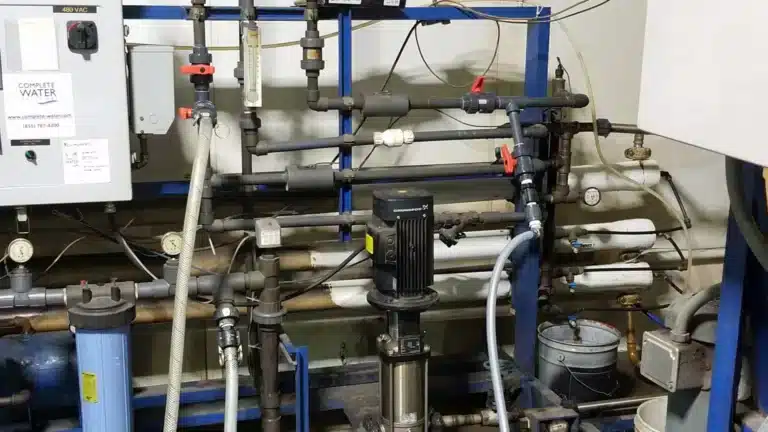
Complete Water performed the cleaning use Avista Membrane Cleaning Products. We use the Avista products as they have been certified NSF approved for off-line cleaning. Because the membranes were scaled we only performed a cleaning using Low pH Cleaner
Avista P303 Low pH Cleaner – Data Sheet
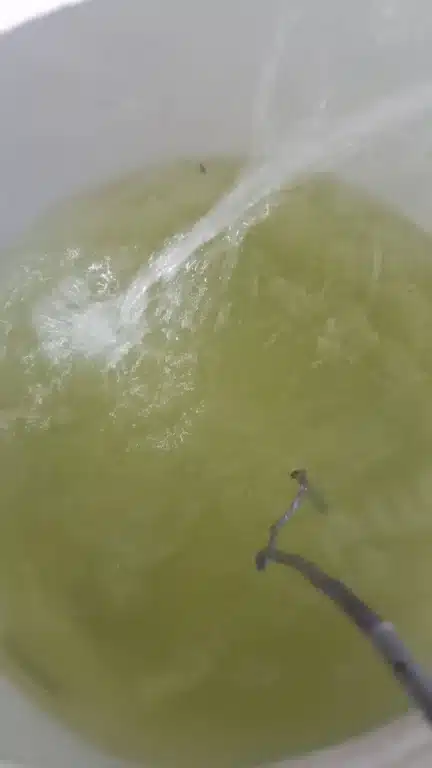
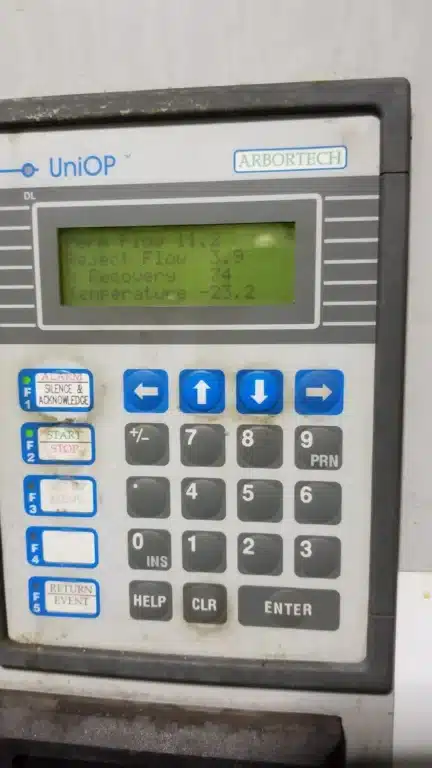
After the first cleaning flows were up to 8 GPM. Past data shows flow at 10 – 12 GPM. So we performed a 2nd cleaning.
After cleaning the second time 11.4 GPM permeate and 3.9 GPM concentrate.
ro housing #1. 6 microsiemens
ro housing #2. 10 microsiemens
ro housing #3 20 microsiemens
After the 2nd cleaning, we successfully recovered back the flows, pressures and conductivity.
Do you need your RO System Cleaned or Repaired?
Don’t Wait Contact Complete Water Solutions
This RO Membrane Cleaning Service Took Place In Indiana
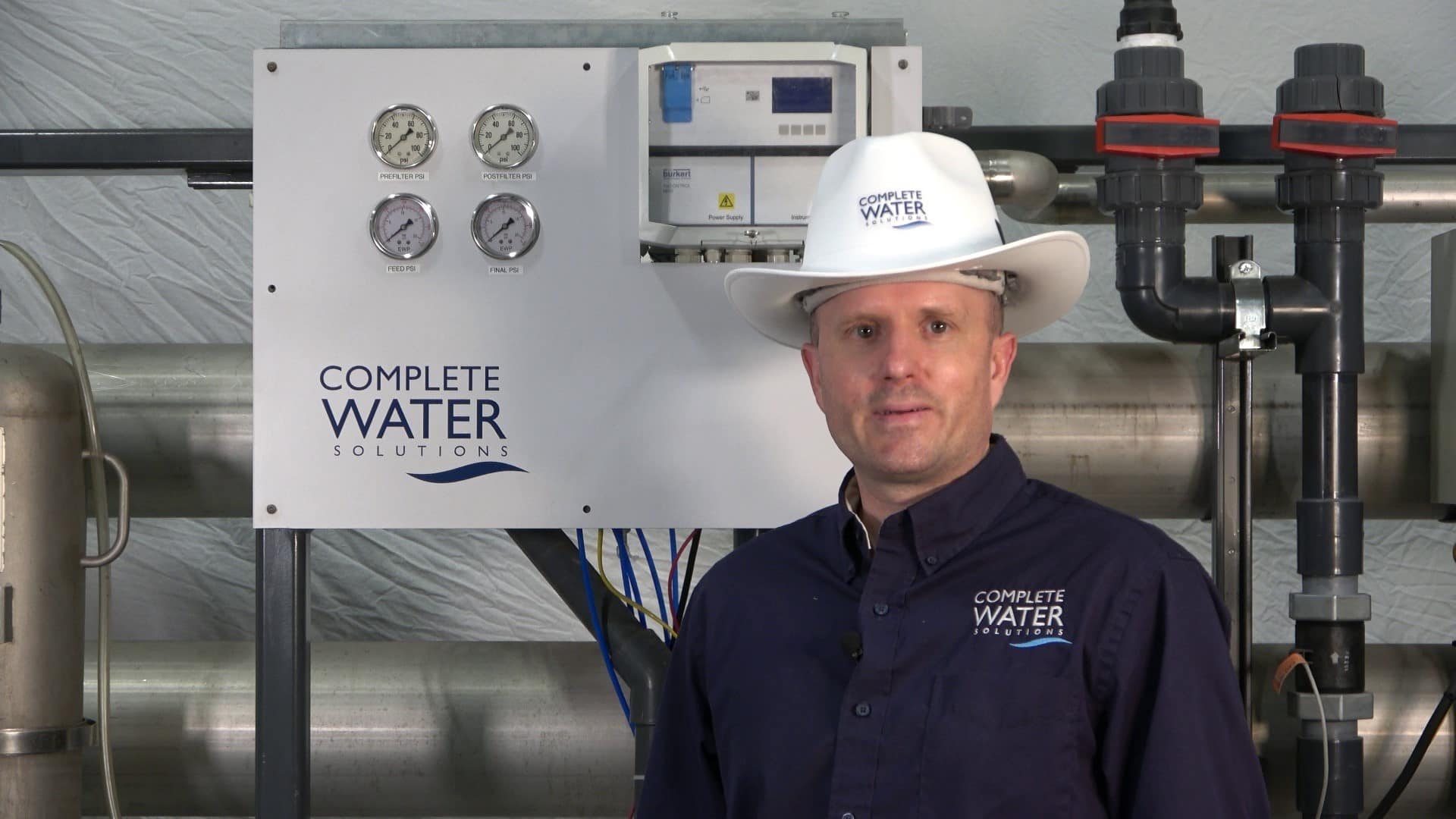
With over 30 years of hands-on experience in the water treatment industry, Nathan Olszak is a trusted water treatment expert. He specializes in designing, engineering, and servicing water treatment systems. As the owner of Complete Water Solutions, Osmonics, and Membrane Cleaning Pro, Nathan has built a reputation for delivering customized water treatment solutions that enhance efficiency, reliability, and water quality across various industries, including the medical, commercial, and manufacturing sectors.
Nathan’s journey in water treatment began as a service technician. He gained in-depth knowledge by working with all major brands of equipment, including Veolia, Suez, Bruner, Culligan, Pentair, Aquamatic, Osmonics, GE Water, Marlo, Lakeside, Fleck, Autotrol, US Filter, ION Pure, Siemens, Evoqua, and many others. This hands-on expertise, combined with his technical certifications, has made him a leader in water system engineering and water management.
Credentials & Expertise
- Certifications: David H. Paul Reverse Osmosis Certification, PLC Programming
- License: Power Plant Operating Engineer 3rd Class
- Specialties:
- Design & engineering of water treatment systems and advanced water systems
- Custom water filtration systems and solutions
- Installation, automation, and repair of water treatment systems
- Expertise in Reverse Osmosis (RO), Deionization, Water Softening, Carbon Filtration, Iron Filtration, UV Treatment, Ultrafiltration (UF), Process Filtration, CEDI/EDI, and more
- Specialized knowledge in Boiler Feed Water, Tower Makeup Water, and drinking water production for industries such as bottling, pharmaceuticals, and food processing
- Project management and reclaiming of water system waste for other uses
- Evaluation of raw water sources and potential contamination risks
- Industrial water treatment strategies to prevent corrosion and optimize system performance
- Boiler water treatment to enhance energy efficiency and system longevity
Nathan’s commitment to excellence extends beyond equipment sales and service. He works closely with clients to develop tailored water treatment services that optimize performance and meet their operations’ unique demands. His expertise covers methods that mitigate water impurities, ensure fresh water accessibility, and maintain regulatory compliance. It also includes the design of high-efficiency reverse osmosis systems for industrial use.
Nathan focuses on the latest technology in water conditioning, water softeners, filters, and pumps to improve maintenance and efficiency. His experience in laboratory testing and biofilm control ensures the highest industry standards in water treatment processes and water management.
Additionally, his deep understanding of infrastructure and water data analysis provides long-term, cost-effective solutions that promote health and safety. His expertise ensures that businesses receive top-tier, quality water treatment solutions.
For insights into the latest industry trends, innovations, and best practices, explore the Complete Water Solutions Blog, where Nathan shares valuable information on water filtration systems, sustainability, and water solutions engineering.
Give Us A Call (855) 787-4200 or Email info@complete-water.com



